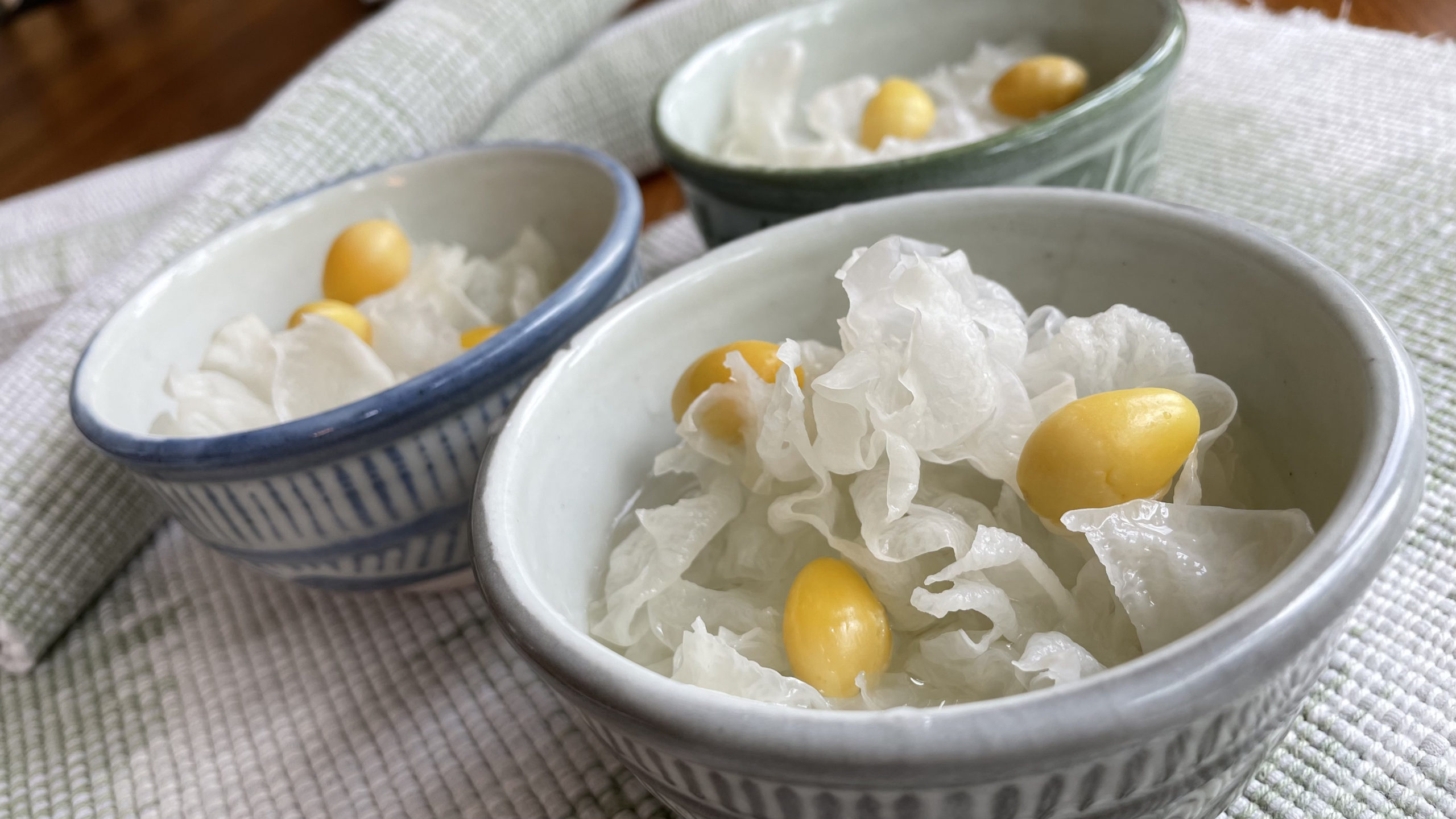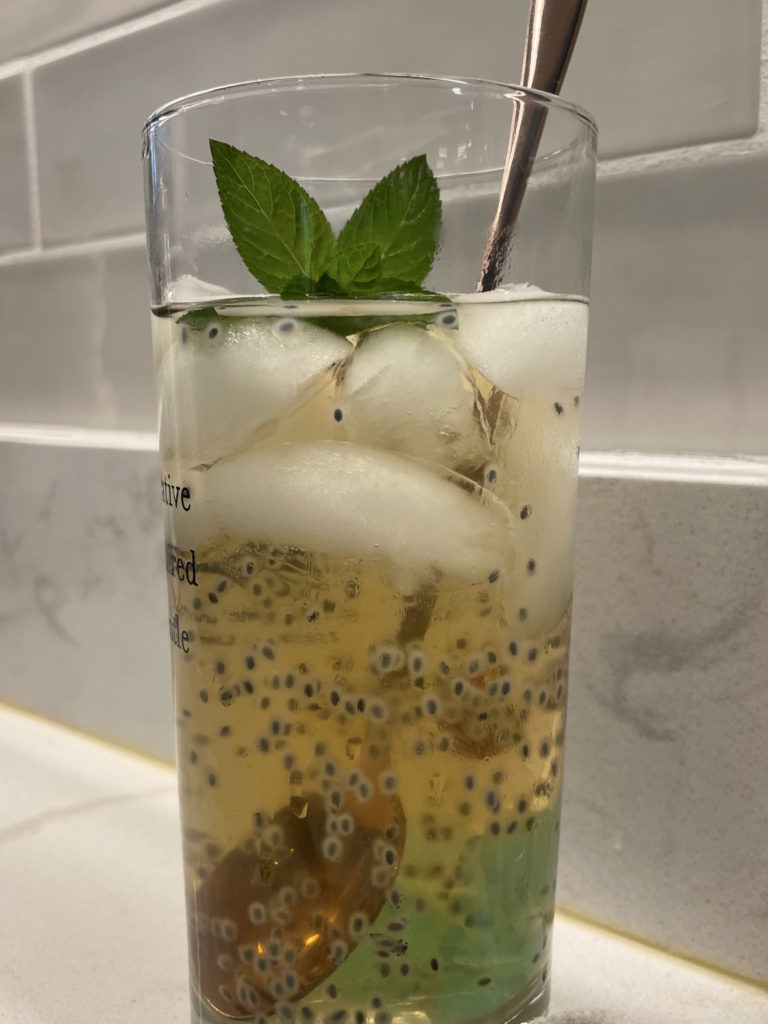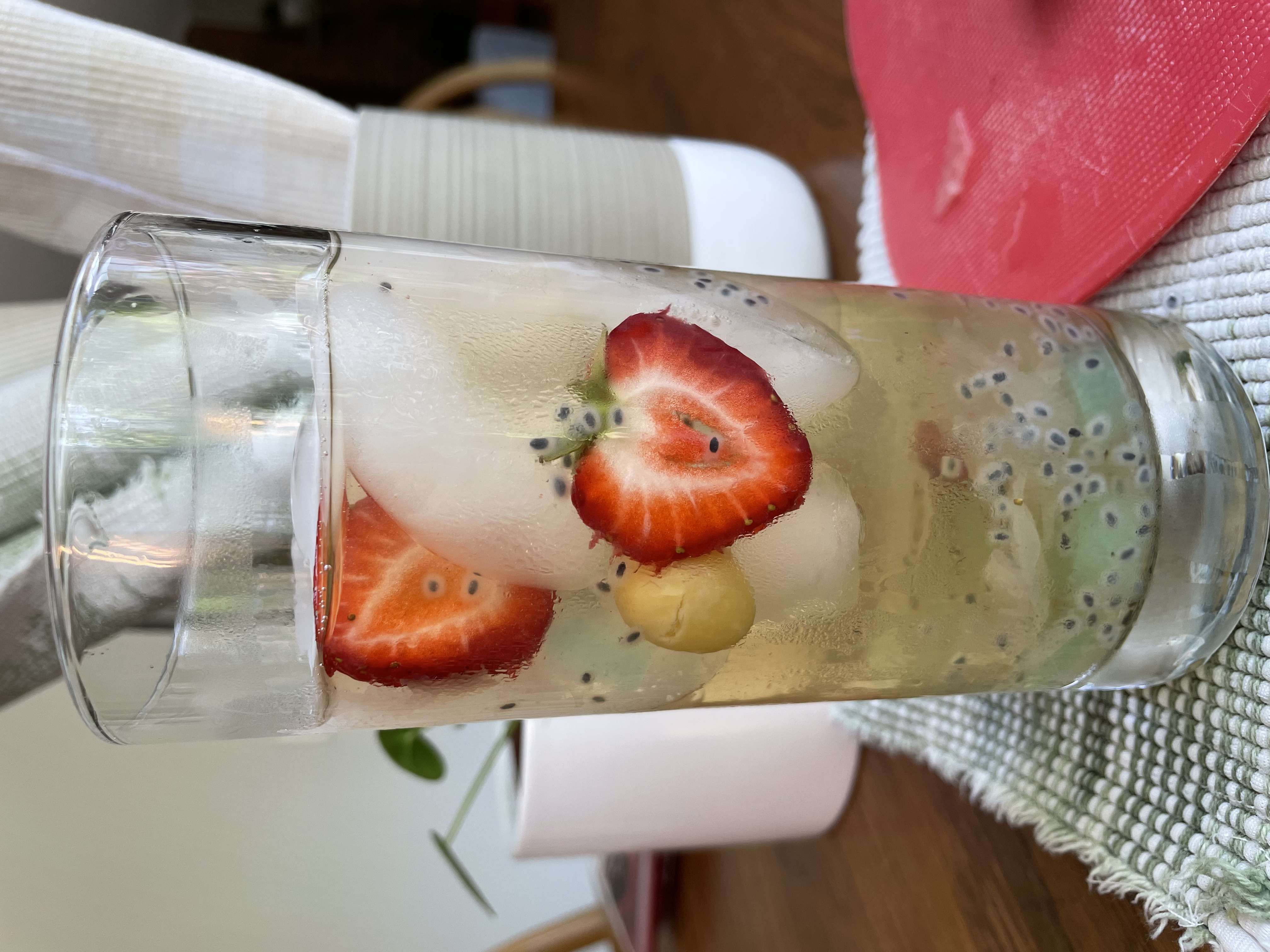![]()
Ginkgo nuts are unheard of in western dishes—at least I’ve not encountered them—but they are a delicacy in Chinese cooking. We cook it mostly in soups, both savory and sweet.
Mum’s favorite was making it with a pork bone broth, adding dried soy beancurd sticks and a handful of ginkgo nuts but mine is in tong shui or sweet soup—a dessert that can be served warm or cold, shown in the featured photo.
Cooking ginkgo nut with snow fungus in a light syrup is the simplest, most traditional way to make sweet soup. The soup is so easy; I’m embarrassed to say it’s only boiling water with sugar. In Singapore we add pandan leaves in the boiling water to give it fragrance and palm sugar which has a richer flavor than regular sugar. Sometimes we add Chinese dates and goji berries towards the end of boiling.
Look for pandan leaves in the frozen sections. In Singapore, we’d pick the leaves in our backyard or balcony. You can also drip a few drops from a bottle of pandan essence. Alas, there’s nothing like the leaves.
I now make this sweet soup in much less time than when I last posted on Sweet Soup. My past post on Snow Fungus Sweet Soup here.
Here are three variations of serving the sweet soup as cold drinks. Below are the recipe and directions. These are very refreshing and possibly good for you! Usually I drink these in the middle of the day.
Notice, there are very few pieces of ginkgo in each serving. With ginkgo, less is more. Unlike red beans, barley, or soy beans, we don’t dump in a whole lot of ginkgo nuts in a soup. Usually, we’d just throw in a handful, not more than a dozen pieces in a pot of soup, allowing two or three per person.
This is the same with other delicacies like Chinese almonds, Chinese dates, or goji berries. We don’t eat a bowl of soup filled with goji berries or ginkgo. You get a couple or so per serving. It’s just so.
Mum and Popo, my grandmother, told us kids not to eat too many ginkgo nuts. They said it was bad for us. I read that eating too many gingko nuts can be toxic to the system.
The nut tastes slightly bitter–kum (Cantonese)–like a tinge of bitterness, the bitterness you’d taste in the rind of orange or lemon. Or, maybe, arugula? As I child, because I didn’t like bitter foods, I always considered this kind of bitterness an adult taste.
Preparing ginkgo nuts
If you happen to buy ginkgo nuts in their shells, then you have to smash them open to get to the nut. This is my stash that Ted collected from the streets of DC Chinatown that he cleaned and dried! (See previous post)
To cook the nut simply boil them with the skin on for about 10 minutes and slip the skin off when it is cooked. Overcooking the nut will cause it be to split and too soft. The cooked nut should be firm.
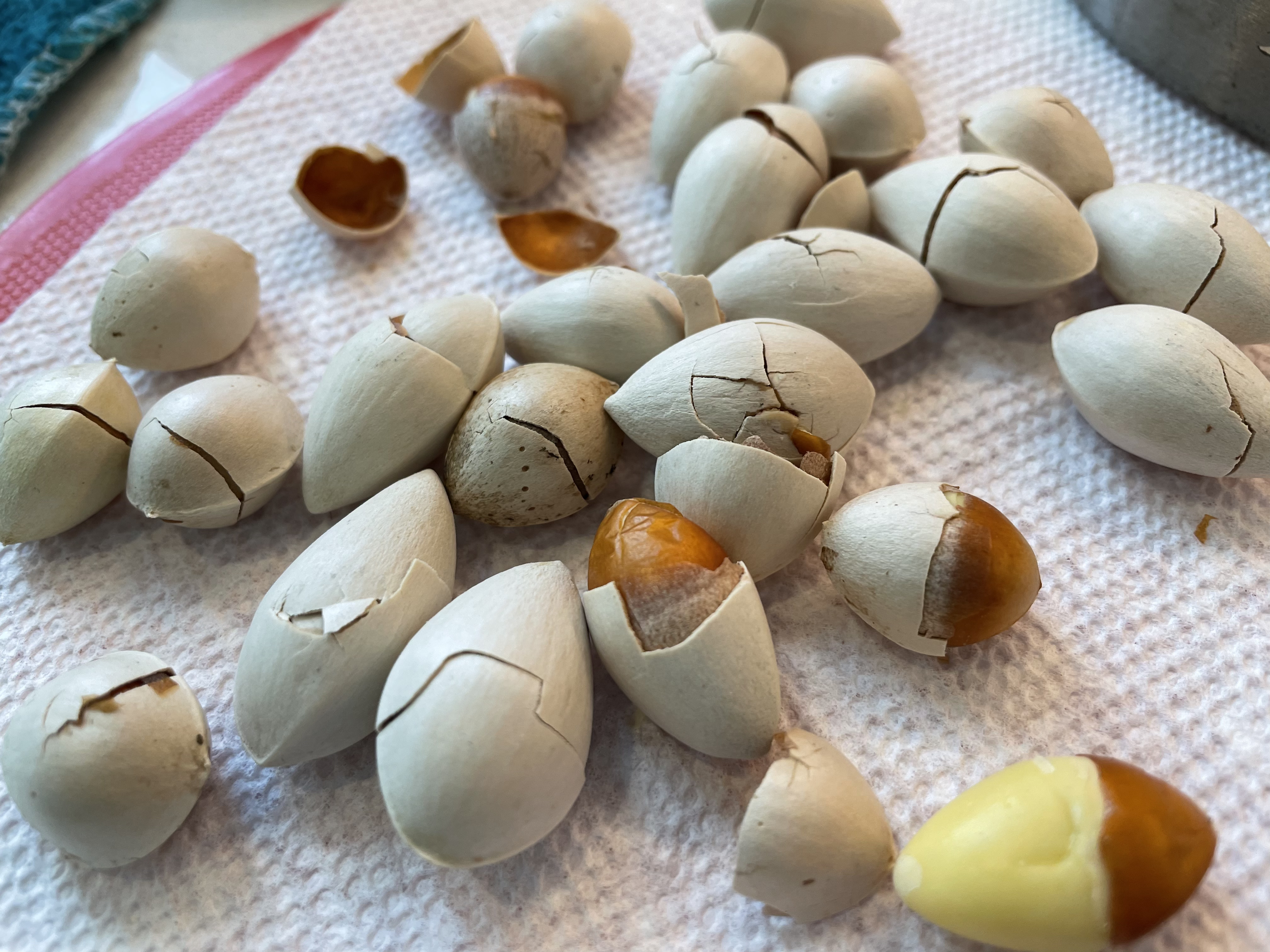
If you’re not near DC Chinatown (and Ted probably picked them all) it’s just easier and cheaper to get frozen or chilled ginkgo nut from Chinese or Korean supermarkets. These are cooked already and can just be added to the sweet syrup.

Here are my variations of the different drinks. Start by making the syrup and then add different ingredients: snow fungus, ginkgo nuts, goji berries, Thai basil seeds, and strawberry, or mint.
Syrup with Pandan Leaves and Snow Fungus
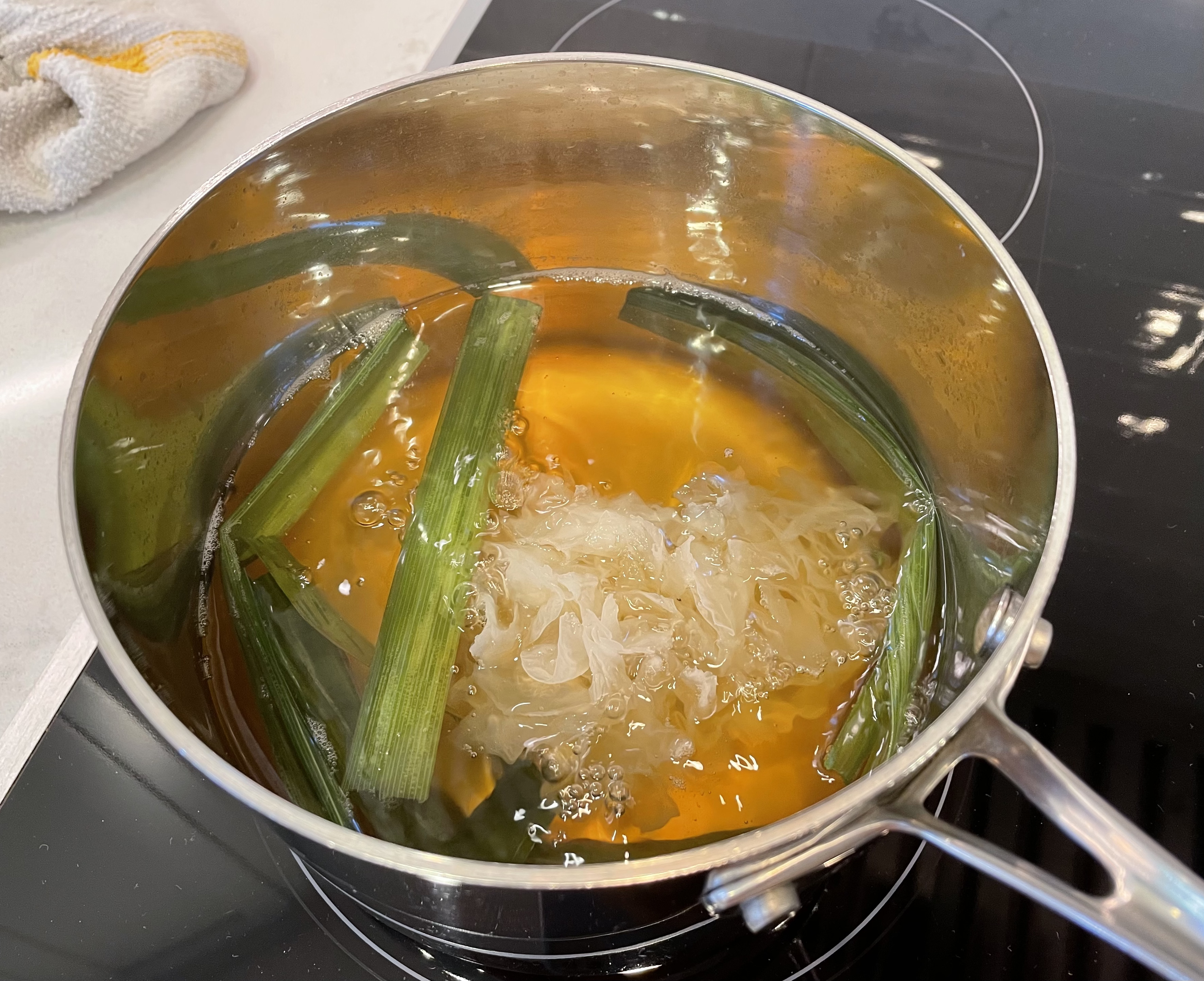
- 1 large piece snow fungus
- 2-3 cups water
- 2 blades of pandan leaves
- 4 oz palm sugar, rock sugar, or 1/4-1/2 cup granular sugar, to taste
Preparing snow fungus: Soak snow fungus in water for about 5-10 minutes to reconstitute. Here’s some info on snow fungus.
To make the syrup bring water to a boil. Add pandan leaves and sugar. Lower to simmer and boil till sugar is melted. Sweeten to taste. I like to make it very sweet so I can add water to it.
Add reconstituted snow fungus to the boiling water and boil for another 3-5 minutes.
Snow Fungus Drink With Ginkgo Nut and Goji Berry
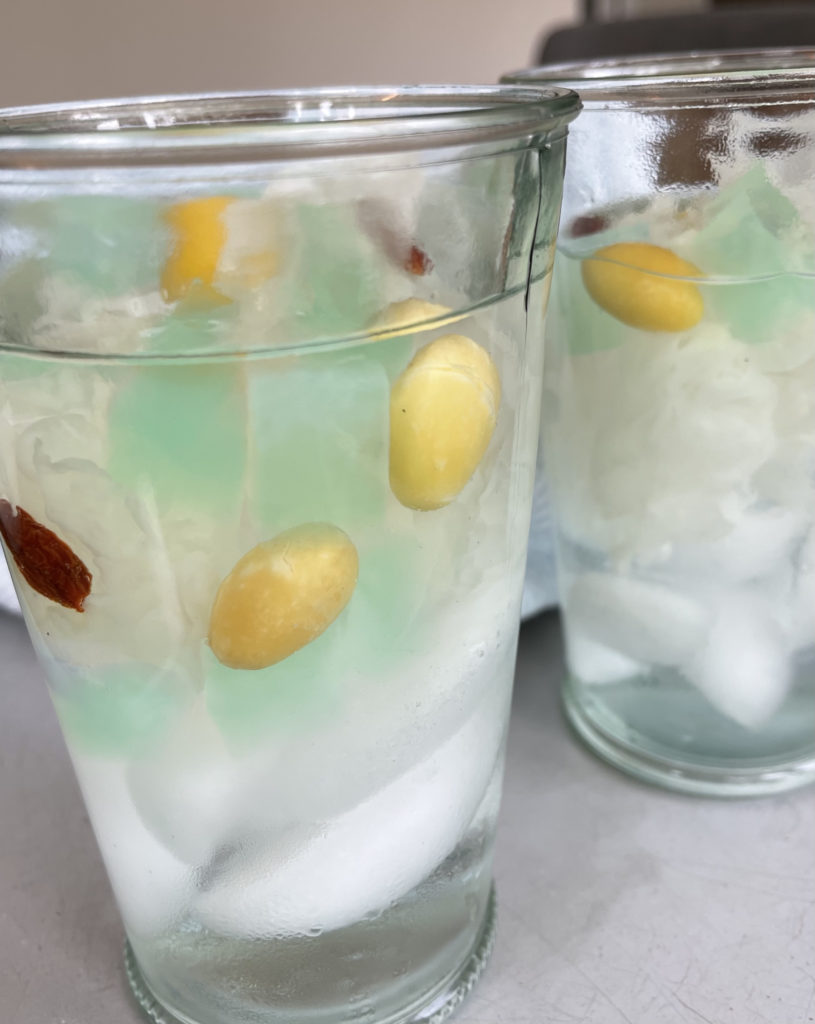
- Syrup with Pandan Leaves and Snow Fungus
- 12 pieces cooked ginkgo nuts
- 10 pieces goji berries
Make syrup with snow fungus, following recipe above.
If using frozen ginkgo nuts, add them in the last few minutes of cooking. Add a handful goji berries and simmer for another 2 minutes. Cool. Dilute with water, to taste. Serve over ice.
If you look carefully, there is cubed agar agar in the drink. I made some agar agar jelly with green coloring, cut them in cubes, and added them to drink. But that’s another post.
Snow Fungus Drink with Thai Basil Seed
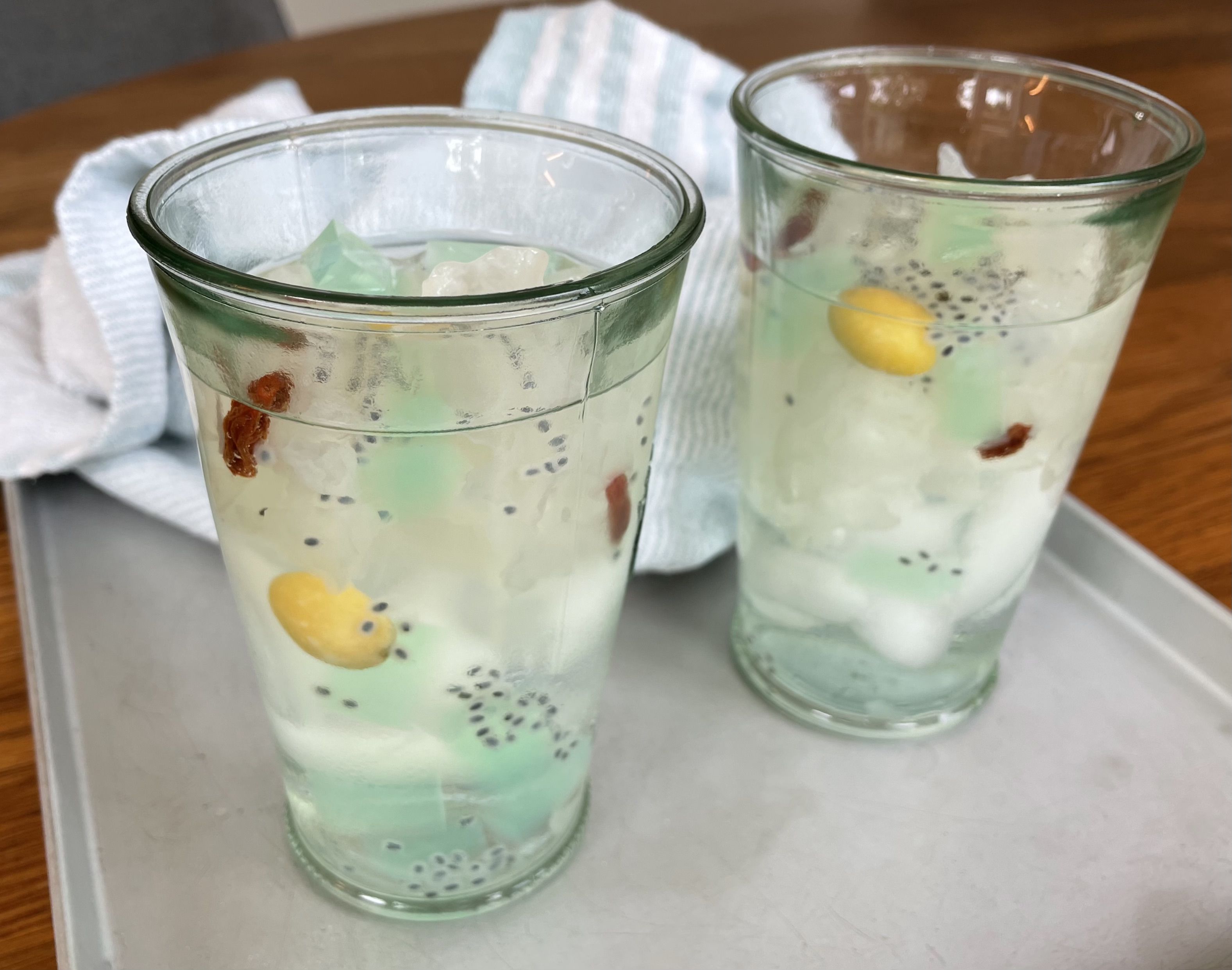
Thai Basil Seed is like chia seed except the Vietnamese and Thais have been adding it to drinks for generations. I think the the rave of adding chia seeds to drinks started within the last 10 years or so.
You can buy Thai basil seeds in Asian supermarkets but they may be hard to find. Here’s how small they are. Rinse seeds in a sieve and reconstitute in a bowl of water. Once it is fully bloomed, add a couple of teaspoons of the seed into Ginkgo syrup drink.
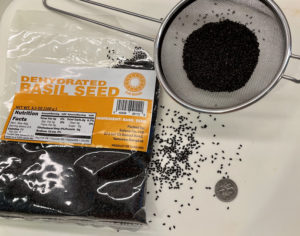
Other variations:
Add sliced strawberry, a squeeze of lime or lemon, or a sprig of mint to drink.

